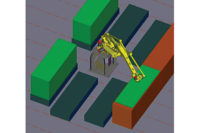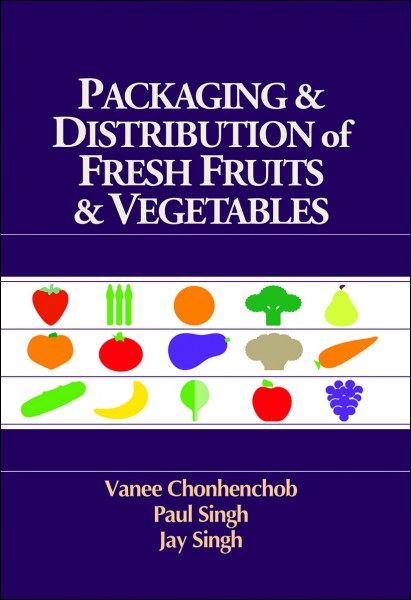Full speed ahead with automation
Equipment helps snack and bakery producers overcome labor shortages.

Bakery and snack plants are moving away from manual cartoning and case packing to automated equipment. Driving forces behind automating these functions or upgrading equipment include the need to overcome labor shortages; meet growing demand for single-serve portions; adopt flexible machines that can address changing, and sometimes divergent, consumer preferences; accommodate sustainable and case-ready packaging, and ensure food safety.
In a growing number of bakery and snack plants, pick-and-place robotic systems are being installed to provide the flexibility needed to handle an expanding array of products, package sizes and packaging materials. “These robots can handle lightweight products precisely, reducing the risk of damage to products with delicate packaging associated with sustainability trends,” notes the 2022 State of the Industry, US Packaging Machinery Report, published in July 2022 by PMMI, Reston, VA.
“Today’s robotic systems are more affordable, especially with the newest generation of highly flexible, cost-efficient cobots,” says Jorge Izquierdo, vice president, market development, PMMI. “Although the focus behind adoption has been the ability to work alongside human operators, many manufacturers are discovering the greatest benefits of cobots are their flexibility and modularity. Reprogramming is fast and easy, and their smaller size makes them well-suited for frequent adjustment and redeployment. Higher payload capacities are encouraging usage for end-of-the-line tasks, particularly at small- and medium-size enterprises.”
The current labor shortage is fueling demand for more automation in secondary packaging, “We are receiving 35 percent more orders now than we were two years ago,” says Masatoshi Inui, vice president of sales at PMI KYOTO Packaging Systems, Elk Grove Village, IL. “Due to labor shortages resulting in soaring labor costs, we anticipate that the demand for automation in the packaging world will increase on a global scale during the next few years.” SF&WB
Delkor Systems Inc.
Delkor Systems Inc., St. Paul, MN, has developed the LSP line of vision-based, robotic case packers, backed by the inverted Fanuc M-10 robot which acts as a human arm. “This 5-axis robot allows product to be picked and placed in numerous orientations,” says Dan Altman, vice president, sales and marketing. “By tilting the case conveyor, products can be loaded standing up or laying flat into any number of package styles.”
The LSP line of vision-based case packers is used for flexible products, including stand-up pouches, pillow packs, doy pouches, rigid containers, and thermoformed products. Salty snack pouches such as pretzels and chips, flow-wrapped goods such as energy bars, and clamshell trays of doughnuts are all being packaged on the LSP line.
Delkor Systems plans to introduce a case former that can produce all of the new case styles at high speeds, according to Altman. “Trays, brown box shippers, retail ready cases, and club store trays will be formed on this system at high speeds. A high capacity corrugate magazine will allow for twice the corrugated material in the magazine than traditional case formers.”
Brenton, a ProMach Product Brand
Brenton, a ProMach Product Brand, Alexandria, MN, has introduced the RT1000 Top Load Case Packer, which is geared toward customers that have been hand packing and now realize they need to streamline the output of their production lines. “Those customers find that the automation of robotic top loader and sealer can quickly and accurately keep up with demand,” says Brian Guzek, regional sales manager. The company also has updated its M2000 Side Load Case Packer so that it’s easier for one operator to run with little training.
“We’re seeing a variety of tasty treats in cartons or flexible pouches,” Guzek adds. “From chips and pork rinds in flexible pouches to small sweet baked items in cartons, bakery and snack producers are finding that using an automated solution accommodates the product, packages it efficiently and keeps it intact for shipping.”
BluePrint Automation (BPA)
BluePrint Automation (BPA), South Chesterfield, VA, offers the Spider 100v robotic stacking system, which is being used in new ways such as product accumulation, nesting and de-nesting, according to Jason Hogue, southeast sales manager. The company’s stacking and loading solution forms stacks of product and loads them into horizontal form/fill/seal machines, including continuously moving flow wrapper chain infeeds or indexing thermoform machines.
“By utilizing a DELTA style robot with a high-speed platform for pick-and-place, the system is able to load product into a continuously moving tray conveyor,” Hogue says. “It accepts product from integrated bulk feeding processes, or other methods of product delivery.” An integrated vision option sends product position-and-orientation information to the robot as well as inspection results for size and shape. Wash-down capability for direct food contact applications includes an easily cleanable vacuum system.
JLS Automation
JLS Automation, York, PA, has introduced a robotic carton closer and upgraded its Peregrine® cartoning solution with two different options for carton transport and handling, according to Craig Souser, president and CEO. “The Peregrine is a high-speed, vision-guided robotic top-load cartoning system that offers high sanitary standards. With a footprint one-third the size of traditional top- and end-load cartoners, it places carton forming, loading and closing inline, which saves valuable floor space for food producers.”
The Peregrine’s high-speed JLS TRAK and positive carton transport (PCT) system eliminate problematic handoffs and the need for any other conveyors to move cartons away from the former to accumulate, or manage, the loading process. Cartons are kept in-line, without turns—from forming to loading, all the way to robotic closing.
R.A Jones
R.A Jones, Covington, KY, has introduced the IndeCart 3 transfer for grouping cracker slugs before they are packaged into cartons using the Criterion CL-240 mid-speed cartoner. The first installation was used for graham crackers with the capability of running two, three or four slugs per carton for a given SKU, according to Bob Burkhardt, product portfolio manager–cartoning, robotics and pouching. “The transfer utilizes B&R SuperTrak technology to receive a single stream of cracker slugs at speeds up to 140 per minute. Easily changeable tooling carried by the transfer carts can accommodate various product shapes and sizes.”
While automated changeover between product sizes has been desired by customers for many years, the willingness to invest in the technology integration has historically been low, Burkhardt adds. “Many companies are now seeing new value propositions with optional upgrades such as the Acc-U-Change Plus push-button changeover, which is available on R.A Jones machines.”
PMI KYOTO Packaging Systems
PMI KYOTO Packaging Systems, Elk Grove Village, IL, has added robotics to its secondary packaging machinery, which allows for gentle product handling. “For example, when working with a cereal cartoning machine, our equipment can receive the bags of cereal straight from the customer’s vertical form/fill/seal system and adjust their positioning with a simple shuttering technique,” Inui explains. “With 3,000 collation and loading techniques in our arsenal, which we can control via motion control, our equipment can handle fragile products with ease, precision and attention to detail.”
Cama North America
Cama North America, Buffalo Grove, IL, offers cartoning, case packing, tray packing, and robotic loading systems that are used for products such as bars, cookies, crackers, baking mixes, and pastries in a variety of packaging formats, such as bags, packets, flow wraps, trays, cases, cartons, and rigid containers.
“Our robotic systems help automate the packaging of a variety of packs,” says Billy Goodman, managing director, who notes that Cama manufactures Delta-style robots with carbon fiber arms, which are suitable for fast, smart product handling. “The Triaflex robot, for example, can be equipped with an integral vision system. The robot can sort and pick loose products on a production line and position them into a container or onto a conveyor in a preset pattern.”
Looking ahead, Cama North America will continue to advance its Industry 4.0 technology, which includes an Augmented Reality Machine Assistant, to help maximize operator efficiency and reduce production downtime. Goodman says Industry 4.0 is an important tool that will help operators of secondary packaging equipment improve their skills and increase production.
Looking for a reprint of this article?
From high-res PDFs to custom plaques, order your copy today!









